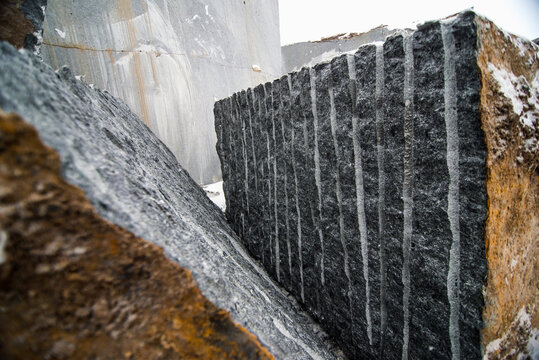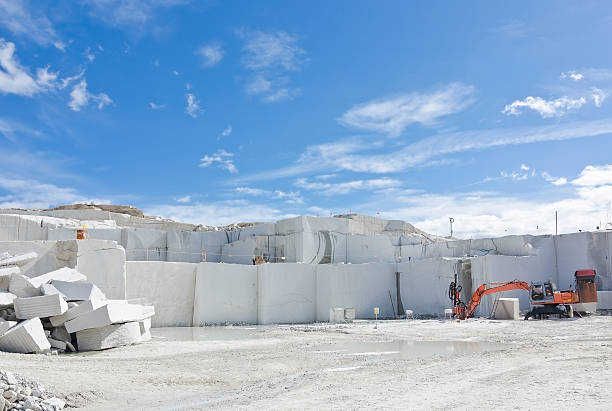Checking Out Granite Quarries in South Africa: A Comprehensive Overview
Wiki Article
Uncovering the Rich History and Lasting Practices of Granite Quarrying
As we stand on the precipice of uncovering the detailed tapestry of granite quarrying, a trip through time exposes not just the physical act of removing rock however likewise the cultural and historic relevance woven right into the extremely fabric of this technique. From the ancient origins that laid the structure for modern-day quarrying techniques to the lasting techniques that are shaping the future of this market, each carve mark on granite surface areas tells a story waiting to be uncovered (granite quarries in south africa). The heritage of granite quarrying stretches far past plain extraction; it is a testament to human ingenuity, durability, and the long-lasting attraction of this stunning rockOld Beginnings of Granite Quarrying
Going back to ancient people, the method of quarrying granite has actually been an essential component of human background and architectural development. The earliest evidence of granite quarrying go back to old Egypt, where substantial pyramids and elaborate sculptures were crafted from this resilient stone. The Egyptians used primitive devices to remove granite blocks from quarries, showcasing the relevance of this product in their monumental constructions.Moving on in history, the Greeks likewise made considerable contributions to the quarrying of granite. The Greeks made use of granite in numerous building wonders, such as holy places and statuaries, showing their ability in shaping and carving this sturdy stone. The Romans even more refined the techniques of quarrying granite, employing advanced devices like knives and hammers to remove and form granite for their famous frameworks.
With the centuries, the practice of quarrying granite has evolved, with modern innovations improving effectiveness while preserving the timeless allure of this all-natural stone - granite quarries in south africa. From ancient civilizations to modern building contractors, the heritage of granite quarrying remains to shape our globe
Advancement of Quarrying Methods
The development of quarrying techniques has actually been marked by a continuous progression in the direction of higher efficiency and accuracy in drawing out granite. From the simple methods used by our ancestors to the sophisticated modern technologies used in modern quarrying procedures, the market has actually gone through significant innovations. Early quarrying methods entailed hands-on labor with fundamental devices such as blades, hammers, and wedges to extract granite blocks from the planet. As human beings proceeded, techniques like fire-setting and primitive explosives were presented to promote the extraction process.In more current times, the advent of equipment revolutionized the quarrying market, making it possible for faster removal prices and enhanced efficiency. Technologies such as ruby wire saws, high-pressure water jets, and pneumatic drills have actually become conventional in modern-day quarries, allowing for exact cutting and lowered waste. Moreover, advancements in computer-controlled devices and 3D modeling have actually maximized quarrying operations, resulting in marginal ecological impact and enhanced sustainability methods. As the need for granite proceeds to rise, the evolution of quarrying techniques remains essential to meeting market needs effectively and sustainably.
Cultural Significance of Granite
Granite holds a profound cultural value throughout different people because of its enduring presence in building work of arts and admired monoliths. From the impressive pyramids of Egypt to the detailed makings of the Angkor Wat temple in Cambodia, granite has been a product of option for revealing splendour and longevity in social heritage. In ancient Rome, granite columns adorned holy places and public structures, representing strength and durability. The cultural significance of granite expands beyond its physical attributes; it personifies durability, stability, and eternity, making YOURURL.com it a sign of enduring traditions and traditions.
Lasting Practices in Quarrying
In the middle of the rich background of granite quarrying and its social importance lies an expanding emphasis on sustainable techniques within the market. As environmental recognition and worries about resource depletion have actually enhanced internationally, the quarrying industry has actually progressively embraced lasting methods to decrease its effect on the environment and bordering communities.
Moreover, improvement and rehab of quarry sites post-extraction are important to lasting methods. By bring back quarried areas to a natural or advantageous state, such as creating wild animals habitats or entertainment areas, quarriers can offset the ecological footprint of their operations and add favorably to the neighborhood ecological community.
Heritage of Granite Quarrying
With a historic backdrop steeped in craftsmanship and industrial progression, what sustaining effect has granite quarrying left on the landscape of modern society? The heritage of granite quarrying goes beyond mere extraction techniques; it has shaped building wonders, urban landscapes, and social heritage worldwide. The sturdy nature of granite has made it a preferred selection for monoliths, buildings, and framework, standing as a testimony to the skill and virtuosity of quarry workers across generations.In addition, the economic footprint of granite quarrying can not be forgotten. The market remains to supply employment possibilities and drive regional economies in areas where granite extraction is prevalent. It has actually also stimulated technological innovations in quarrying methods and tools, causing more reliable and sustainable methods.
In regards to sustainability, the legacy of granite quarrying consists of efforts to reduce ecological influences with recovery projects and responsible source monitoring. By balancing economic rate of interests with ecological stewardship, the industry aims to make sure that future generations can proceed to take advantage see here now of this enduring home natural deposit.
Verdict

Report this wiki page